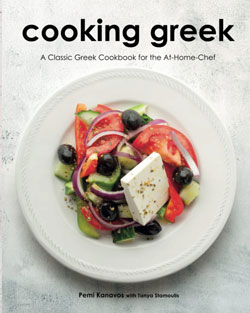nadellii
Active member
I just came back from Greece and I noticed that there are a lot of different types of pitas to eat. Prassopita was one of my favorite and I am having trouble finding a recipe to make. The version I had was in Athens, and it was a handheld sort of pie with a very thick phyllo - maybe it was homemade.
Most recipes I see are in a pan, like a 9 x 13 pan.
Typical ingredients include leeks, onions, feta cheese, egg.
Does this look about right for ingredients?
Most recipes I see are in a pan, like a 9 x 13 pan.
Typical ingredients include leeks, onions, feta cheese, egg.
Does this look about right for ingredients?


